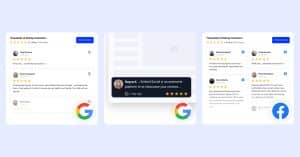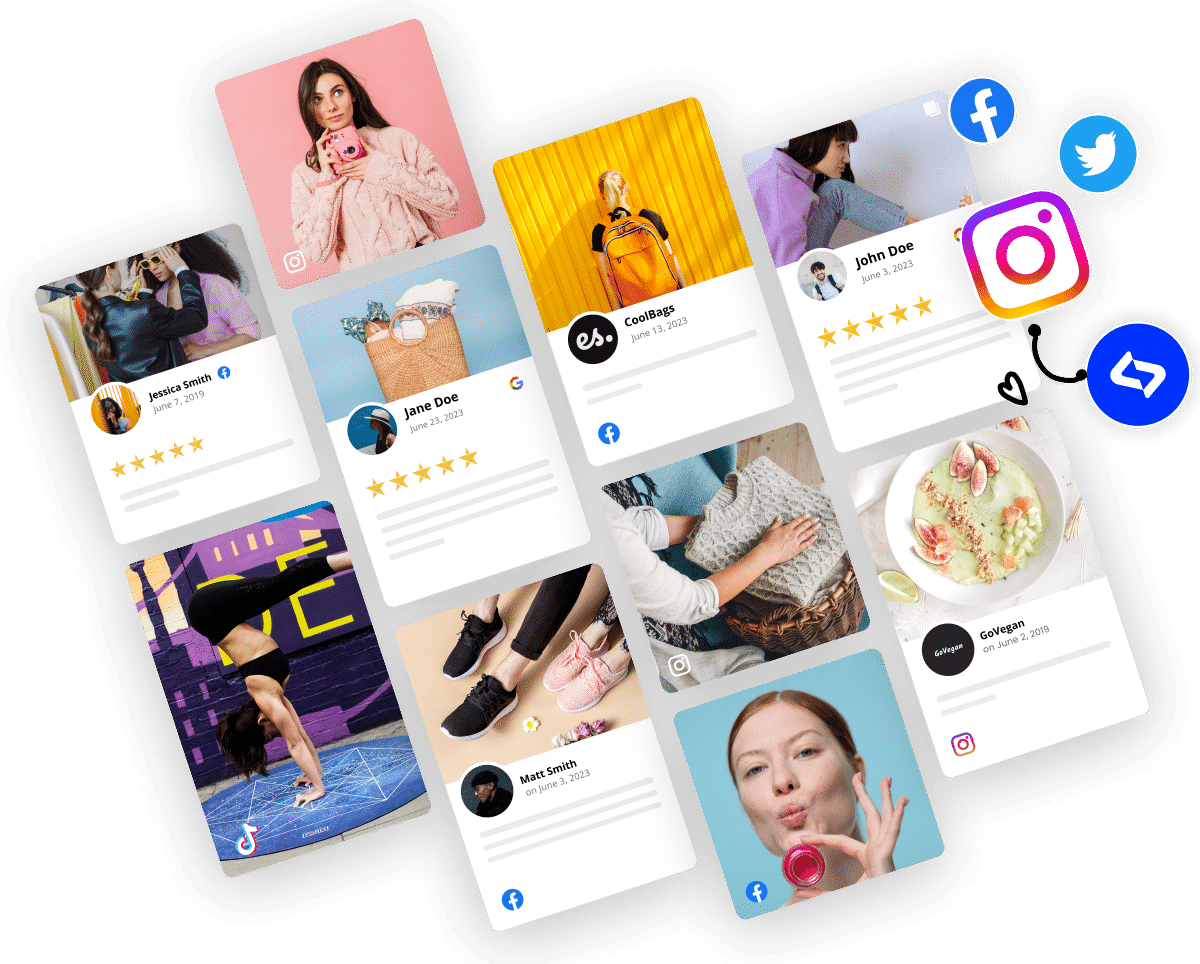The number of prospects that go on to purchase is what is referred to as conversion rate.
In a website’s context, it is often the percentage of visitors that buy.
Most sites focus exclusively on increasing the site visitors they have when they usually have reasonably simple issues with their website.
If these issues are fixed, they can significantly impact their conversion rate and enhance their website’s earnings at a minimal expense.
Human beings respond best to nonverbal communication, and your website visitors are not an exception.
This is the part where the power of visual marketing takes place.
But first…
What is visual marketing?
Visual marketing is about connecting marketing messages to different types of visual elements and content types. It can be relevant images like stock photos, graphics, GIFs, memes, infographics, explainer videos, logos, testimonials, signs, and more.
In other words, visual marketing is about making an object, not exclusively text, the center of your messaging.
Before we proceed to the fun part…
Why visual marketing is so important?
It’s very similar to social media posts where you create interesting and engaging visuals.
It’s very similar to social media posts, where you create exciting and engaging visuals.
Visual marketing can be the perfect way to generate more engagement, whether it’s by clicking on a post, downloading an offer, or making a purchase and improving the communication between your brand and your consumers.
Here are some useful tips for your visual content marketing strategy that can help you implement in your marketing plan and improve your website today:
1. Visitors’ Value Should be Improved
Visual marketing has a crucial role in e-commerce. Those that purchase from you are doing so since they like the thing or things they see. If a user adds a product to a basket, present to them other products they may like also.
If they are checking out a product, the same is applicable, show them the same products. Cross-selling and upselling are thoroughly tested sales tactics, and there is no reason you should not use them online.
2. Be Open, Honest and Clear
In case you have a product out of stock, let it be known. Few things irritate users more than reading everything regarding a product they want to buy, adding it to a cart, and beginning the checkout process, just to discover the product is not available.
The same applies to pricing. A user may invest $50 on a product; however, when they discover the shipping is $50 on top of that, they will probably not continue the sale. Displaying delivery pricing is a tricky business, but not impossible. An Ip to Country database will let you determine where a user is from and present them with a likely delivery price, for instance.
3. Know Your USP (Unique Selling Proposition)
This is what sets you apart from your competitors. If a visitor visits numerous websites searching for a product, why would they decide to purchase from you rather than elsewhere? Most businesses are not aware of their USP.
Virtually all businesses have one, no matter if they are large or small businesses. However, not all of them are knowledgeable about it. If your business is family-owned, then that is a potential USP. Products that cannot be purchased somewhere else, high-quality ingredients, low prices, excellent customer support, free delivery, all these are USPs. You don’t need to be a marketer to know your USP and inform your users about it.
4. Help The User Have Confidence in You
Many people are still wary when purchasing on the internet, and rightly so. There are many people you really must not give your credit card details to. It is essential to provide the prospect with every reason to have confidence in you. Explaining shipping procedures and showing privacy plainly, can also help the user to have confidence in you.
But what will make them trust you, even more, is showing social proof on your website. Customers don’t necessarily want to hear from you directly. They prefer hearing other customers’ experiences with your product or service. Make sure to include user-generated content collected from your social media platforms or review places like Google My Businesses, Yelp, etc.
Content and web design as well play a part in trust. Marie Simon, a marketing consultant at a local SEO Company, stated that “design that is poorly done gives off an amateurish feeling. If a business cannot invest in a good site or will not invest money on it, how can a user be certain their order will be handled with the importance it warrants? If the content is poorly written or inaccurate, the same applies; prove that you take pride in what you do”.
5. Do not Waste Time
One of the most significant errors websites make is seeking a lot of information. Your conversion process might be a request for information or a sale. In either case, do not waste the user’s valuable time requesting details you do not have to know.
Obviously, this is particularly essential with regards to requesting information the user considers private and that they do not wish to share without a valid reason.
6. Your Return Policy Should be Clear
Returns on the internet are and are sure to remain, a major problem for customers. Users are pleased with websites with a great returns policy and are more willing to purchase from them. You can have people call for returns; they can then share the issue with a real person, which is usually an excellent first step. Free return shipping is often a great idea, if commercially viable. People do not want to pay to return things, particularly if it is a retailer’s error.
Lastly, provide the user with enough time to return things. Twenty-eight days is pretty popular; however, if it takes you that long to for a product to be delivered, what use is the return policy? Twenty-eight days from the delivery date works better.
7. Provide Different Options of Payment
It may sound obvious; however, you must give the user a reasonable choice of payment methods. Not everyone has a credit card, and people do not usually want to use them. When determining methods of payment, consider options to the normal methods.
8. The User Should be Informed
When someone purchases something on the internet, they want to know when it will get to their door. Providing them with an estimated delivery date at the time of the checkout process is a great start. When you email them when their product is dispatched is excellent. Providing them with a tracking number if using a delivery service, which supports online tracking, is more effective. You should keep the user informed at each stage of the process, before and after purchase, as much as you can.
How will your conversion rate be improved by this? When you leave the customer pleased the moment they have made a sale, implies they are more likely to talk positively regarding you afterward and are more likely to purchase from you in the future.
9. Use a social media plugin
Incorporating your website with social media is essential for its success. A carefully developed digital marketing strategy will be of enormous help in bringing website traffic and boosting SEO.
The best method to build a bridge between blogging and social media is to include a social media plugin like EmbedSocial to your site template to set up social media sharing buttons. When you begin using some of these ideal social media plugins, you will be sure to see an increase in social media traffic to your site.
10. Make Life Simple for the User
A properly designed site should allow 100 percent of those who would like to purchase to do so. So where do they make a mistake?
Accessibility – Making a website accessible is a legal responsibility in most countries. Sites that are inaccessible can have an effect on the earnings, as visitors find the website difficult to navigate and go somewhere else.
Be Daring – What takes place when a user chooses to purchase a product? They add it in a shopping basket. How is the product added? They click a link or button. What takes place when they cannot see the button? They go somewhere else.
Usability – Your prospects must learn more before they purchase. Lots of websites have product pages with an image and a few sales patter, and nothing else. Poor visibility can result in lots of potential sales being lost. Add some data visualization to communicate your idea, add real-time Q&A sessions, an excellent infographic from Canva, or an explainer video. Your target audience will love your transparency.
Over to you
Hope these visual marketing strategy ideas give you a direction on where to head to show an entirely user-friendly website.
Don’t forget that the human brain forms its first impression in 50 milliseconds, so make sure that it will be a positive one when they visit your website.















